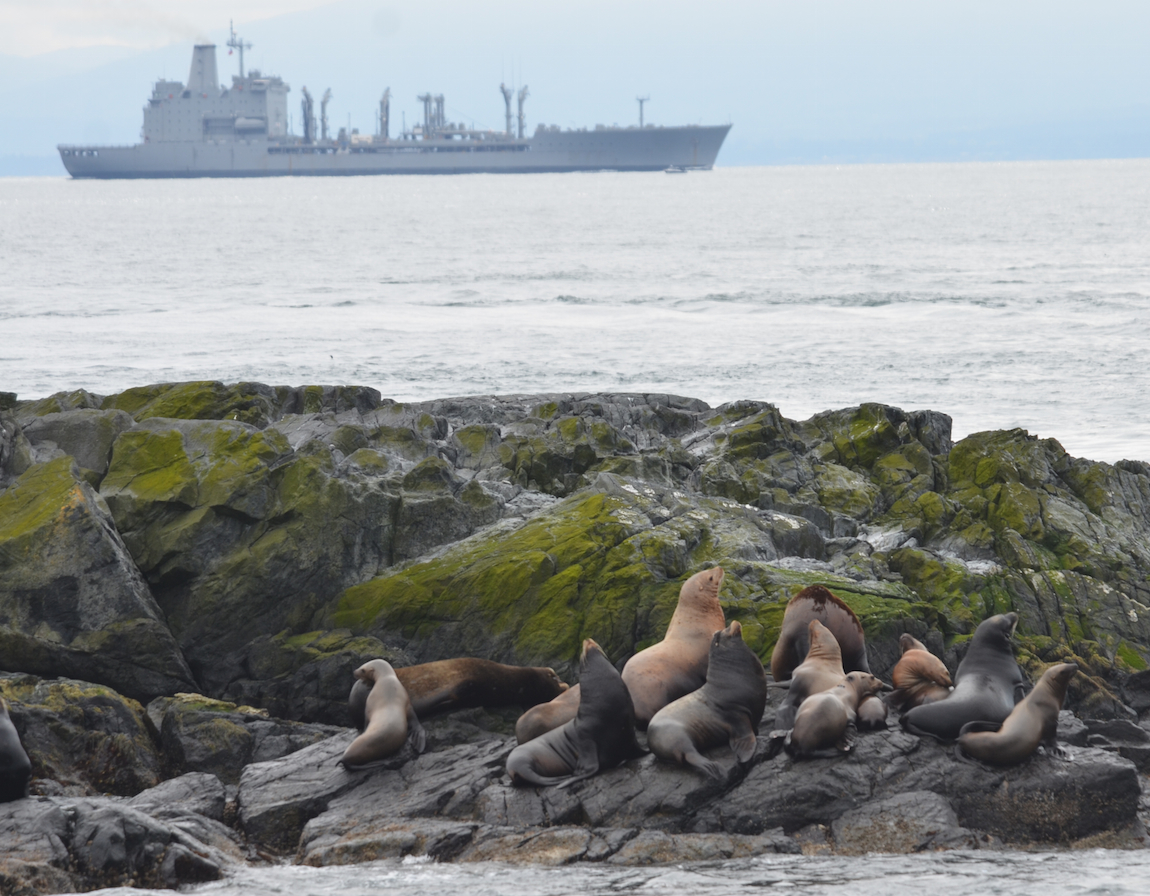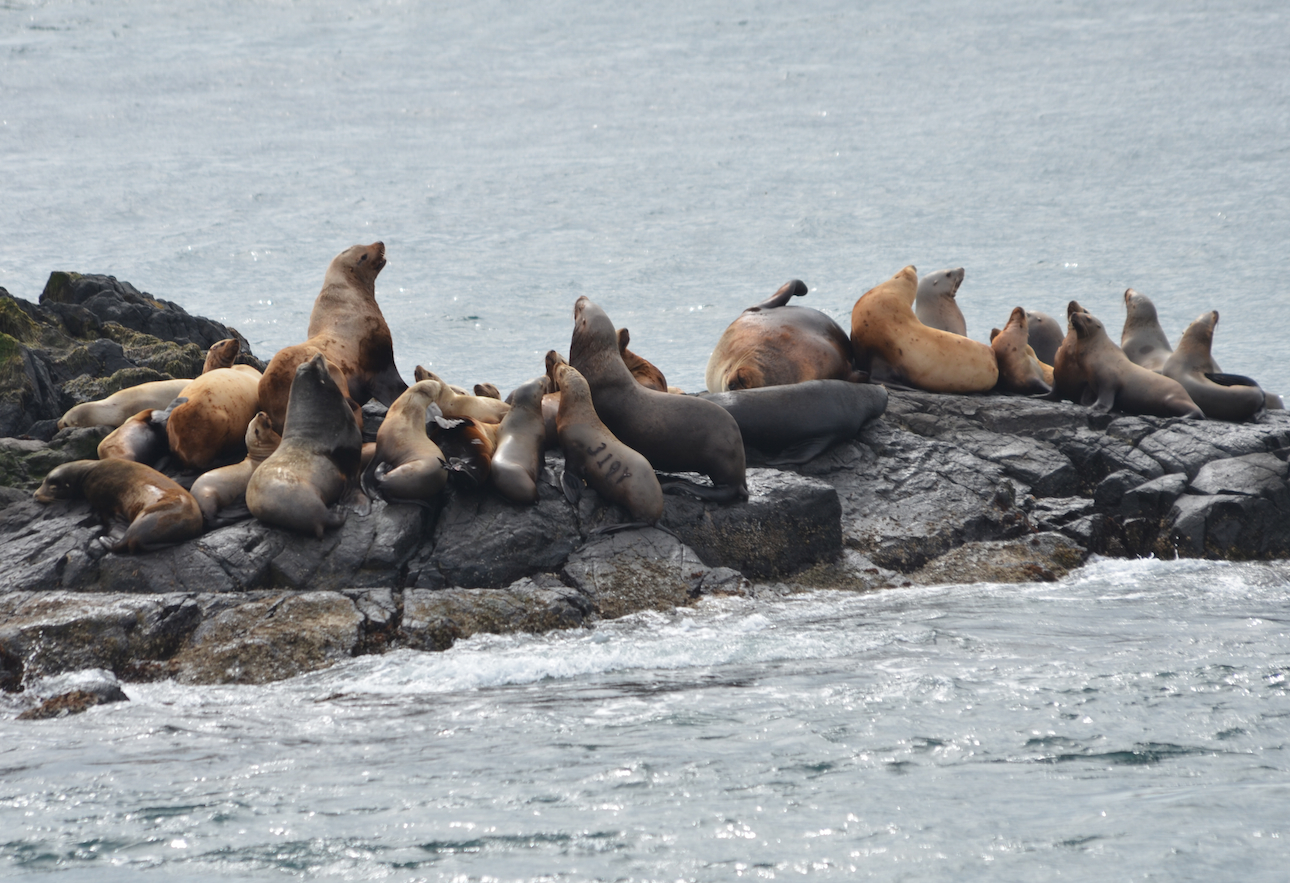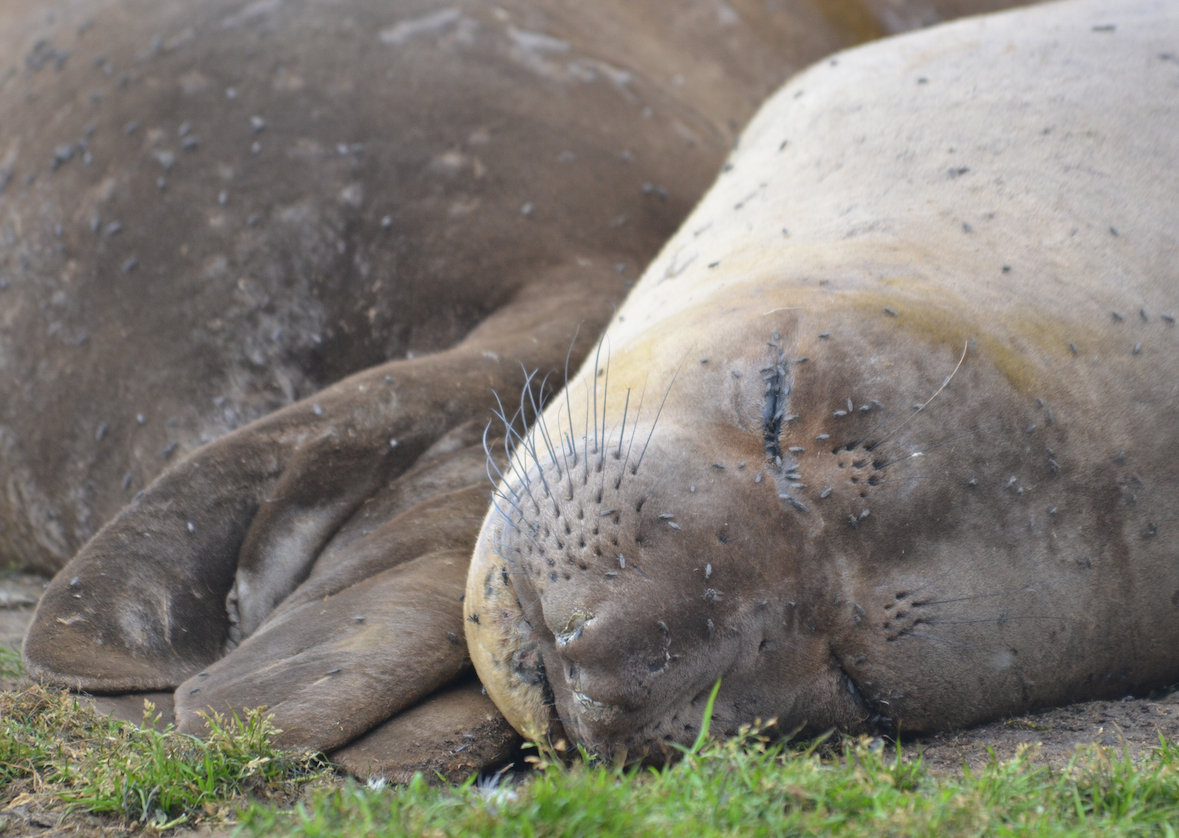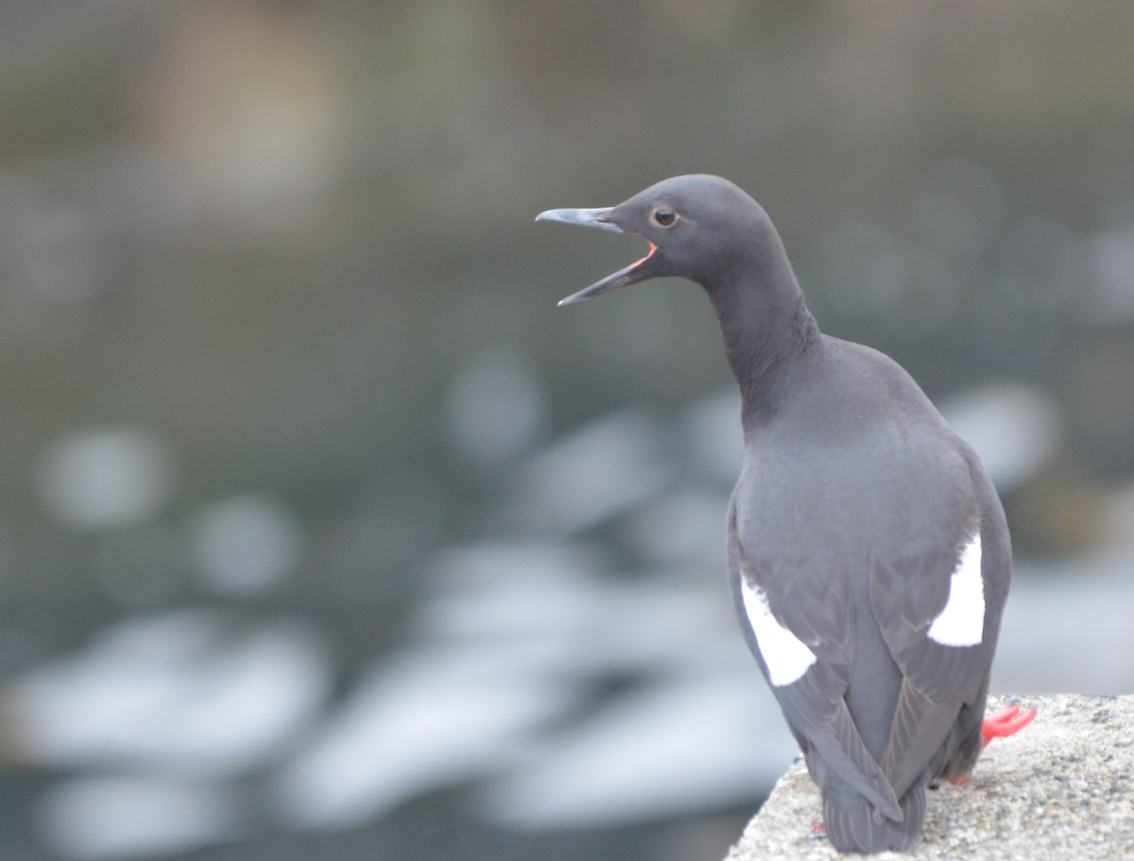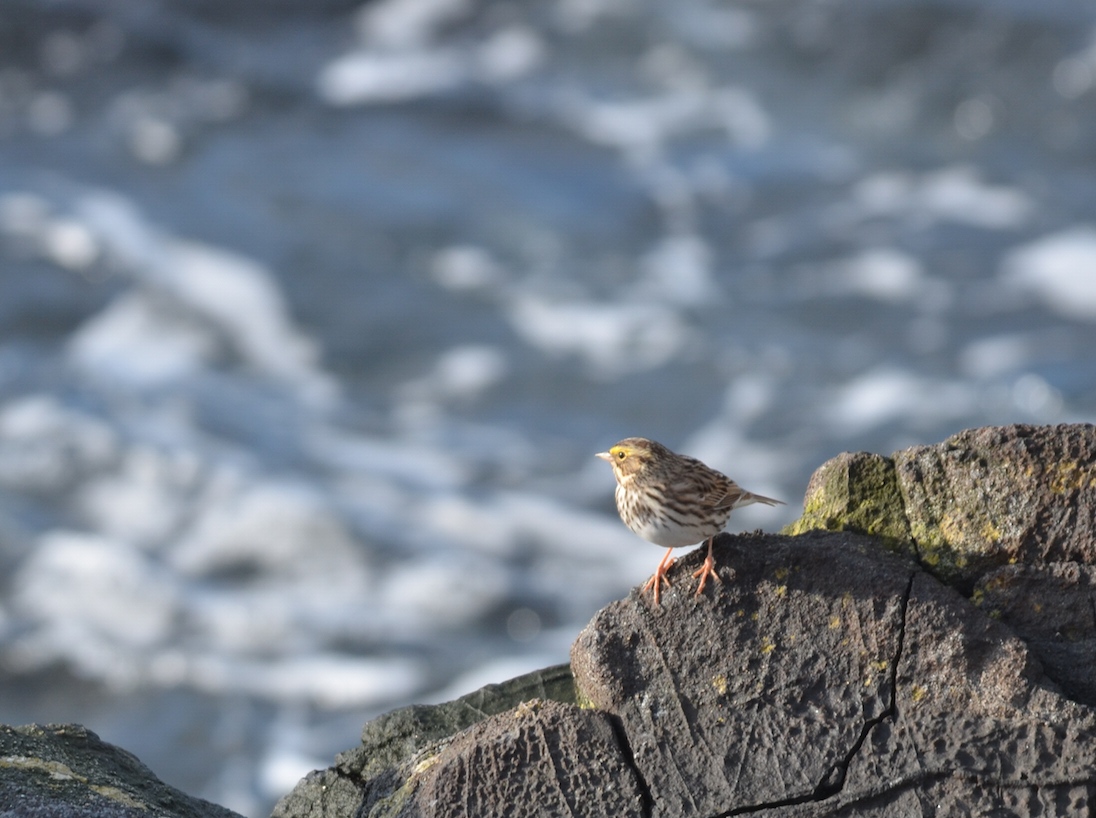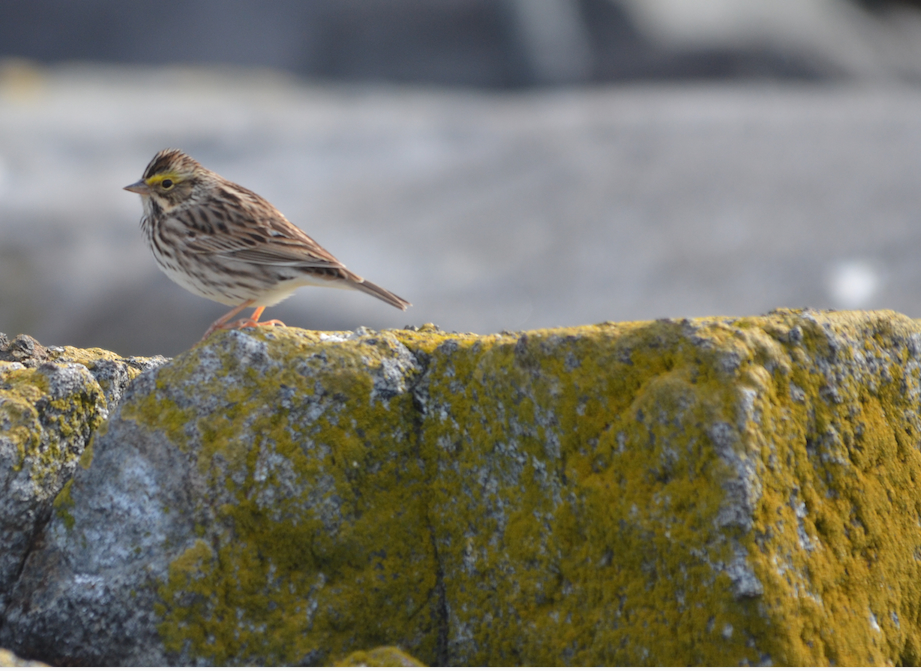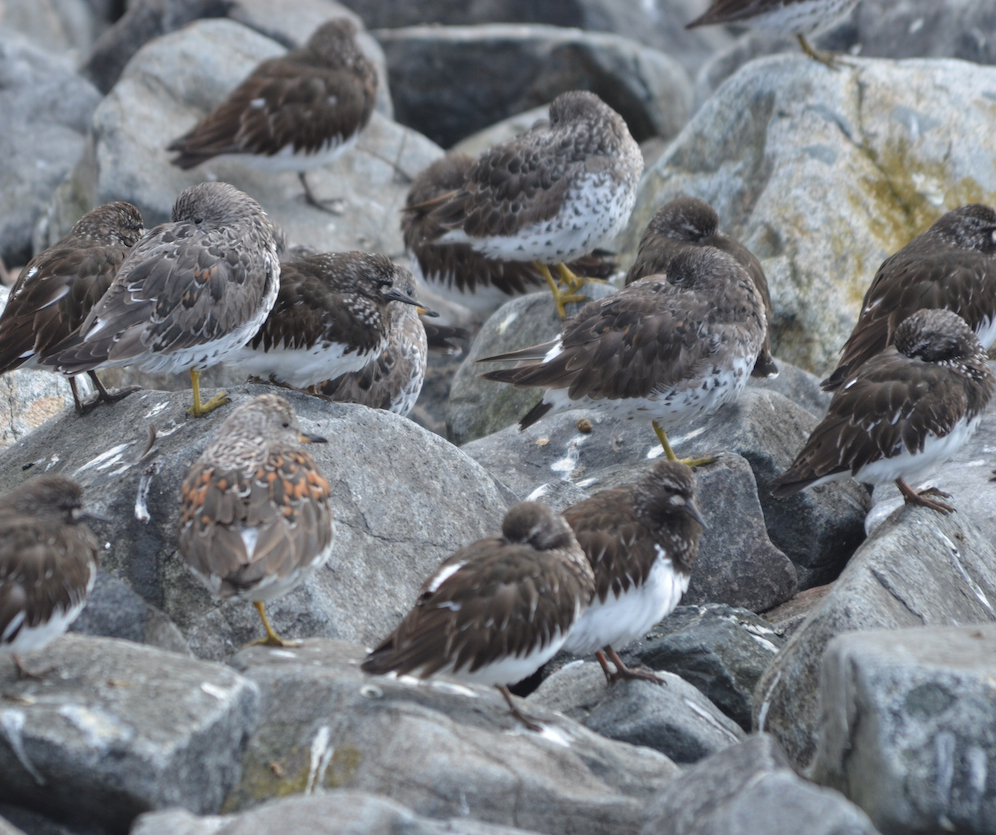Weather and Sea Conditions
North wind, 15 to 20 knots replaced the overnight southeaster and brought cool moist air and overcast skies for the morning today. In the afternoon light winds were variable and turned to light west by early evening. The barometer spent the day crawling out of the hole it was in and by 18:30 was around 1008 hPa. The sky cleared and brightened by evening. A strong wind warning is in effect. The marine forecast for central Juan de Fuca Strait calls for west wind to increase to west 20 to 30 knots early this evening and then drop to west 10 to 15 by early Friday morning. It is expected to be cloudy tomorrow with a 30 percent chance of showers or drizzle and a predicted UV index of 3, or moderate. Sea conditions were calm today once the overnight storm and morning wind chop settled down. As evening starts the wind is moving and the chop is starting again.
Vessel Observations
Three whale-watching operators were observed working in the protected area today and more passed close by through Race Passage heading out to the west and back. One sports fishing vessel was observed transiting the reserve today.
General and Ecological Observations
One Steller Sea Lion 319Y, branded on her left side, was observed hauling out on South Rocks today. She was marked as a young weaner at Rogue Reef in the very southern part of Oregon in 2013, so she is almost 3 years old.
The old male River Otter has taken to napping under the back staircase of the main house in the mornings now and one of the positive things about this new habit, is that it keeps the geese who were interested in nesting there away from the stairs.
This is the end of my shift, my last blast on the blog-horn and it is a little bittersweet to be leaving just as elephant seal show-time starts and spring develops more fully. I leave tomorrow and want to wish the best to this wonderful Ecological Reserve, which was started by students and faculty at Pearson College. Those folks were brave enough to fight for this place, they had the fortitude and vision to found Race Rocks as a protected area. In BC, Ecological Reserve status is the highest level of protection given, by BC Parks. Fisheries and Oceans Canada protects the water area, as a Rockfish Conservation Area, so jurisdictionally that covers the sea bottom, islets (BC Parks) and the water (Fisheries and Oceans), and makes Race Rocks a de facto marine protected area (no caps).
Of course this is also a special Indigenous place with an intersection of cultures and a complex history of use and ownership by different families, groups and Nations. This is a unique, socio-ecological place to celebrate and protect. From its human history to its natural history, lets make sure that Race Rocks remains a marine protected area and is able to provide ecological education and research opportunities for future generations of British Columbians, as well as Pearson College.
Today was animal census day and the results are posted below.
2016- 14-Apr
River Otter 2
Sea Otter 1
Northern Elephant Seal 11
4Harbour Seal 170
Northern Sea Lion (Steller’s) 72
California Sea Lion 99
Canada Goose 22
Brandt (flying through) 350
Harlequin Duck 8
Surf Scoter 6
Common Merganser 1
Brandt’s Cormorant 2
Double-crested Cormorant 2
Pelagic Cormorant 14
Cormorant (not ID’d to species) 5
Bald Eagle (juvenile) 8
Bald Eagle (adult) 4
Killdeer 0
Black Oystercatcher12
Black Turnstone 54
Surfbird 5
Rock Sandpiper 2
Glaucous-winged Gull 560
Common Murres fly through 9
Rhinoceros Auklets flying 6
Pigeon Guillemot188
Northwestern Crow 2
Savannah Sparrow 2
Barn Swallows4
- Nesting Canada geese, the gander standing by the nest.
- The Chilean oiler (resupply ship) leased by Canada passed Race Rocks in both directions today.
- Steller’s Sea Lions haul out on South Rocks. Branded female 319Y visible in the middle.
- Moulting and sleeping are busy activities that bring on the flies.
- Naval replenishment vessel rented by the Royal Canadian Navy.
- Pigeon Guillemot ashore.
- Sleeping River Otter
- Savannah Sparrows are back.
- Savannah Sparrow
- Mixed species flock of shorebirds.
Chores and Visitors
Today was cleanup day in preparation for departure tomorrow. Other chores were routine and there were no visitors.
All the best goes out to Riley, Eco-guardian for the next six weeks.

